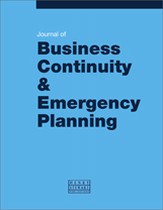Healthcare logistics in disaster planning and emergency management: A perspective
Abstract
This paper discusses the role of healthcare supply chain management in disaster mitigation and management. While there is an abundance of literature examining emergency management and disaster preparedness efforts across an array of industries, little information has been directed specifically toward the emergency interface, interoperability and unconventional relationships among civilian institutions and the US Department of Defense (US DoD) or supply chain operations involved therein. To address this imbalance, this paper provides US DoD healthcare supply chain managers with concepts related to communicating and planning more effectively. It is worth remembering, however, that all disasters are local — under the auspice of tiered response involving federal agencies, the principal responsibility for responding to domestic disasters and emergencies rests with the lowest level of government equipped and able to deal with the incident effectively. As such, the findings are equally applicable to institutions outside the military. It also bears repeating that every crisis is unique: there is no such thing as a uniform response for every incident. The role of the US DoD in emergency preparedness and disaster planning is changing and will continue to do so as the need for roles in support of a larger effort also continues to change.
The full article is available to subscribers to the journal.
Author's Biography
Jerry D. VanVactor is an active duty healthcare logistician in the US Army medical service corps. He is a doctor of health administration and holds masters degrees in business administration and healthcare management. Dr VanVactor has served with distinction in the US military since 1989 in many healthcare and supply-chain management roles.
Citation
VanVactor, Jerry D. (2016, December 1). Healthcare logistics in disaster planning and emergency management: A perspective. In the Journal of Business Continuity & Emergency Planning, Volume 10, Issue 2. https://doi.org/10.69554/PAQN9602.Publications LLP
